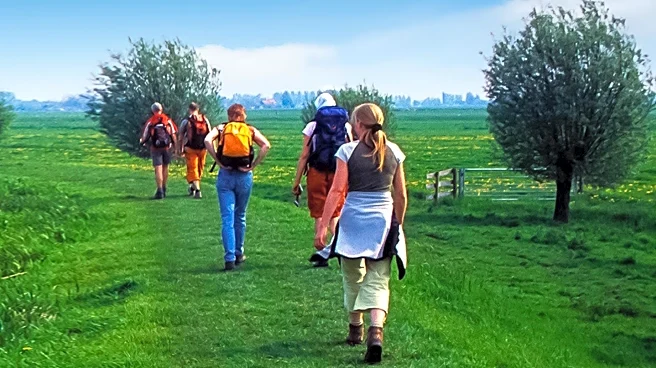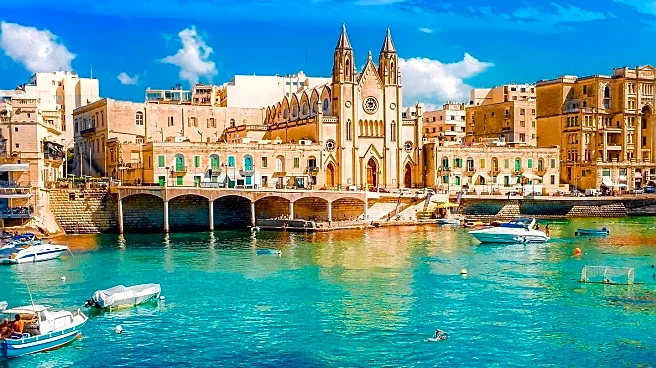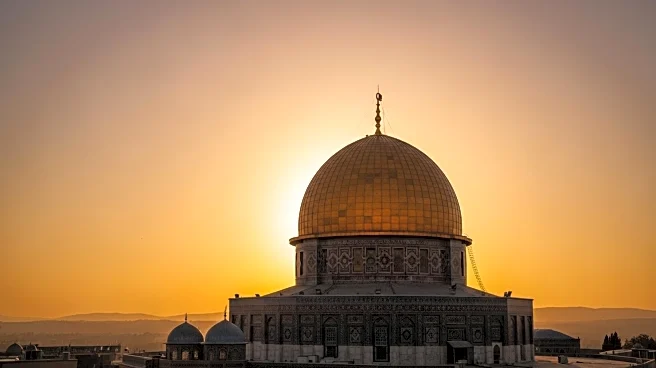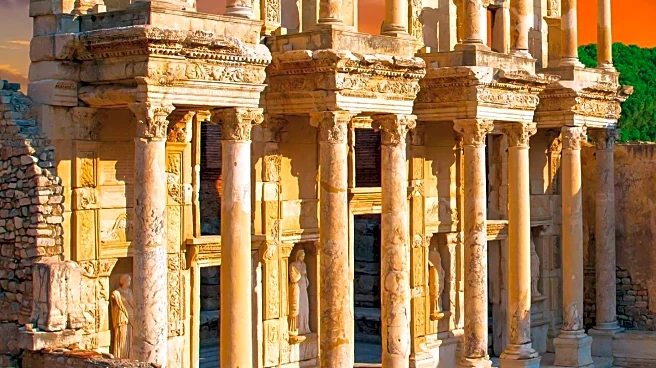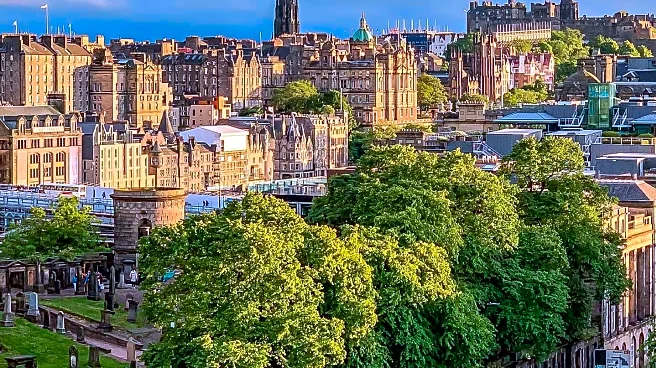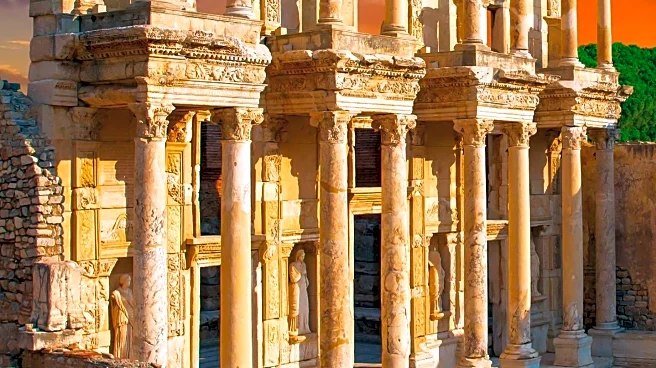What's Happening?
In the Friuli-Venezia Giulia region of Italy, farmers are continuing a centuries-old tradition known as 'osmiza,' where smallholdings open their doors to the public to offer homemade wine and cold food. This practice, rooted in a decree by 18th-century Holy Roman Empress Maria Theresa, allows farmers to sell their products for a limited period each year. The tradition is particularly strong in the Karst Plateau, a region known for its steep rocky ridges and vineyards overlooking the Adriatic Sea. Visitors can enjoy local wines and platters of cold cuts, pickles, and cheese at affordable prices, making it a popular attraction for both locals and tourists. The osmiza tradition reflects the complex cultural identity of Trieste, a city at the crossroads of Roman, Slavic, and Austrian influences.
Why It's Important?
The osmiza tradition is significant as it highlights the unique cultural and gastronomic heritage of the Friuli-Venezia Giulia region. It serves as a draw for tourism, providing visitors with an authentic taste of local life and traditions. This practice not only supports local farmers and producers but also contributes to the region's economy by attracting tourists seeking unique culinary experiences. The tradition underscores the region's blend of Italian and Slovenian influences, offering a distinct cultural experience that sets it apart from other Italian destinations. By preserving this tradition, the region maintains its cultural identity and promotes sustainable tourism.
What's Next?
As the osmiza tradition continues to gain popularity, there may be increased efforts to promote and expand this unique cultural offering. Local tourism boards could enhance marketing strategies to attract more international visitors, highlighting the osmiza experience as a key attraction. Additionally, there may be opportunities for farmers to collaborate with local businesses to create more comprehensive tourism packages that include visits to osmize, local accommodations, and other cultural experiences. The ongoing interest in authentic and sustainable travel experiences suggests that the osmiza tradition will remain a vital part of the region's tourism strategy.
Beyond the Headlines
The osmiza tradition also raises questions about cultural preservation and the impact of tourism on local communities. As more tourists flock to the region, there may be concerns about maintaining the authenticity of the experience and ensuring that local traditions are not overshadowed by commercial interests. The balance between promoting tourism and preserving cultural heritage will be crucial for the region's future. Additionally, the osmiza tradition highlights the importance of cross-cultural influences in shaping local identities, offering insights into how communities can embrace diversity while maintaining their unique cultural characteristics.
